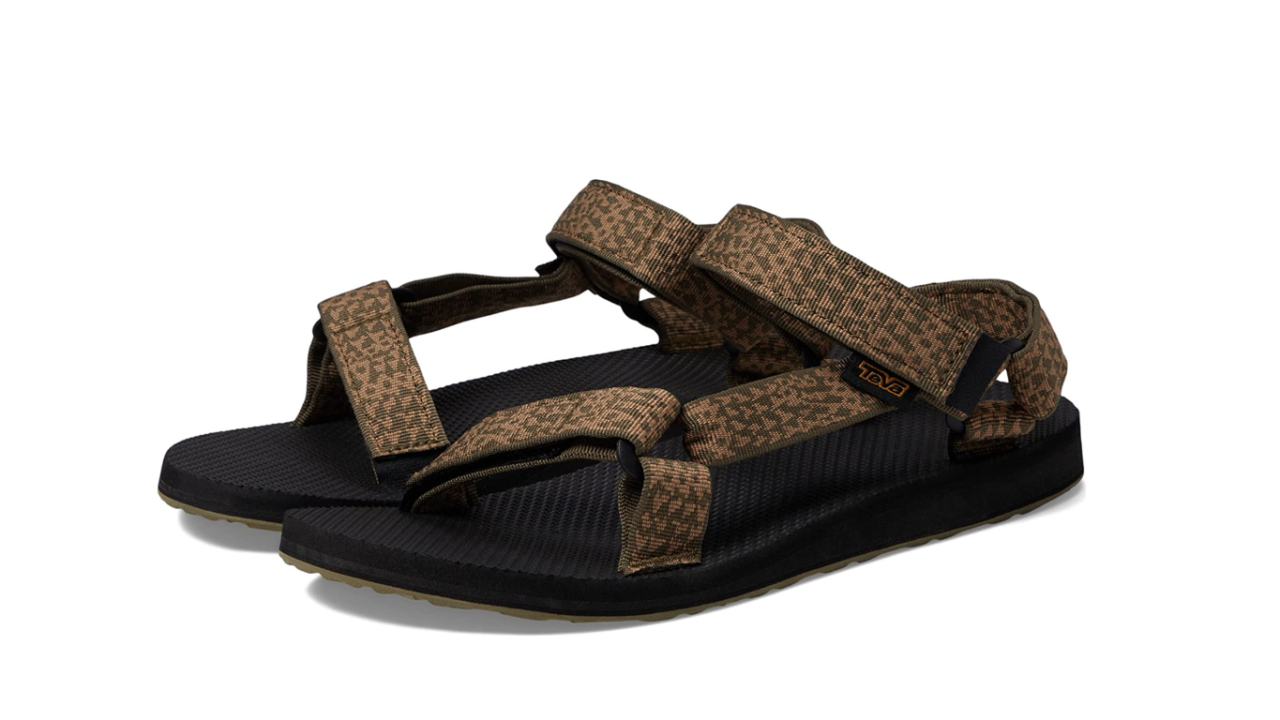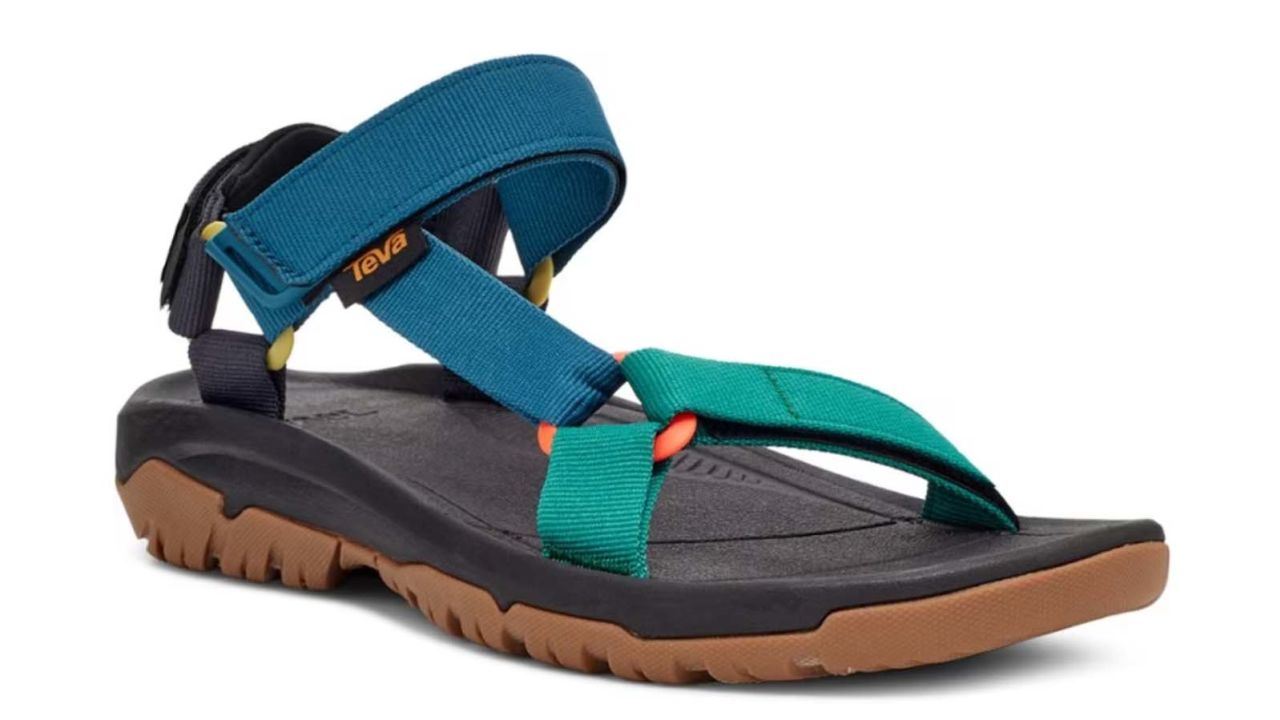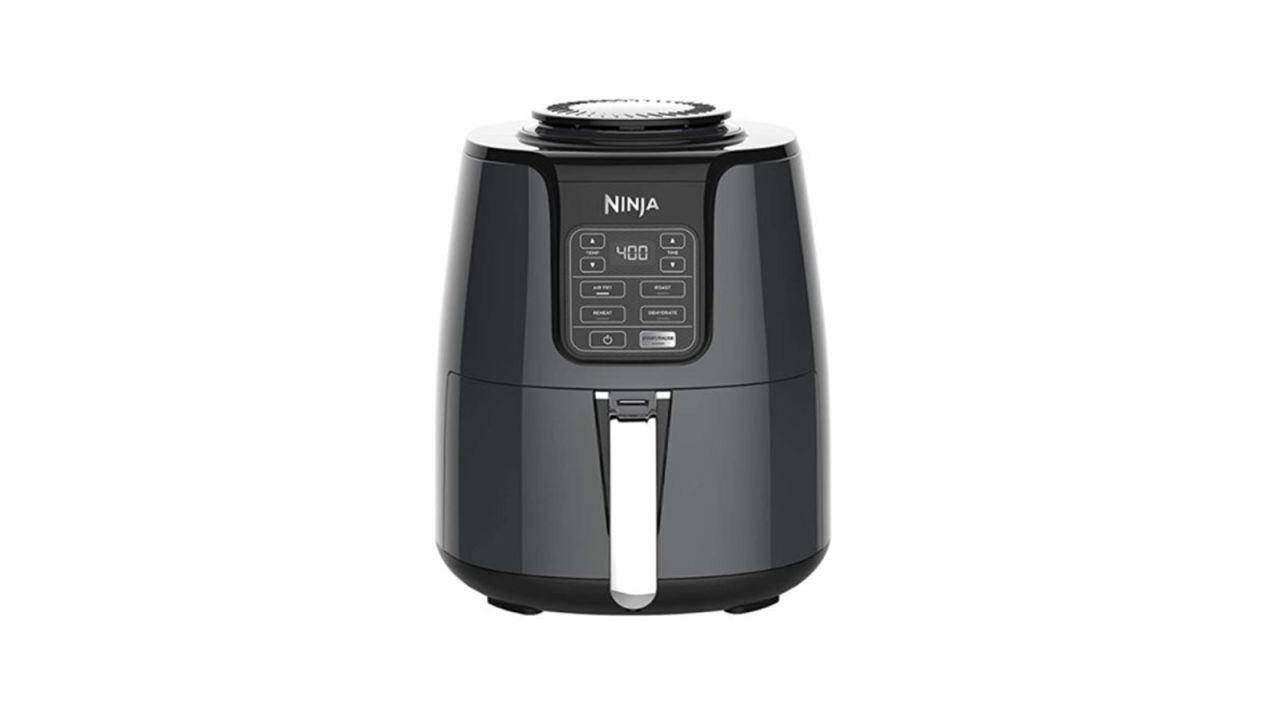The best hiking sandals we tested
Best hiking sandals: Teva Terra Fi 5 Universal Hiking Sandal
When it comes to summer hiking, there seems to be a stark divide between the diehard hiking boot people and the hiking sandal fanatics. For those who fall into the latter category, finding the best hiking sandals with plenty of traction, support and stability can be challenging.
I’ll admit, for most of my decade as a serious hiker, I’ve been firmly on team boots. But as the number of days above 90 degrees Fahrenheit in my hometown of Boulder skyrocketed, I started wondering — should I consider switching to a pair of sturdy hiking sandals when temperatures soar?
I asked a few footwear experts what they’d recommend, then hopped onto the internet to research the best hiking sandals on the market today, keeping in mind that I would want the grip, arch support and all-day comfort needed to hike up to ten miles in my new waterproof sandals. Afterward, I narrowed down the contenders, consulted with my editor and set out to hike more than 50 miles over two months in the various trail sandals that made the cut.
Several blisters and many days of cold, wet and sandy feet later, I’ve got a newfound appreciation for the art of hiking with exposed toes, and I fell utterly in love with Teva’s Terra Fi 5 Universal Hiking Sandal in the process. Read on for a no-nonsense account of why this is the best pair of hiking sandals you can buy.
Best hiking sandals
With a stellar grip that’s as good on wet rocks as it is on gravel trails, a wide forefoot and easy-to-adjust straps, Teva’s Terra Fi 5 Universal sandals are perfect for adventures big and small.
The Terra Fi 5 Universal hiking sandals offer superior traction and excellent arch support, making them a winner on rugged trails. Easy-to-adjust velcro straps and an open-toe design make it possible to dial in the perfect fit across various foot shapes, too.
Best hiking sandals: Teva Terra Fi 5 Universal Hiking Sandal

The Terra Fi 5 Universal Hiking Sandals feature awesome grippy soles, fabulous arch support and wide forefoot stability, all of which served me well during my two months of testing in Colorado. Whether I was wearing the sandals out on mile-long neighborhood dog walks or trekking for multiple days in the Indian Peaks Wilderness, these shoes performed well in whatever terrain I threw at them.
First, it’s worth noting that the Terra Fi 5 tested better than almost every other shoe on our roster in the grip category, coming in second place behind the more expensive Chaco Z Rapid Pro ($130), which feature name-brand Vibram soles. The Terra, on the other hand, are made with the brand’s proprietary Spider Rubber. I spent an afternoon hopping around on slick rocks in and around Boulder Creek and found that both shoes performed well on both wet and dry uneven terrain. The only catch? Because of their cinching mechanism, the Chaco pair needed readjusting every time I got out of the water, while Teva’s easy-to-adjust velcro webbing stayed firmly in place.
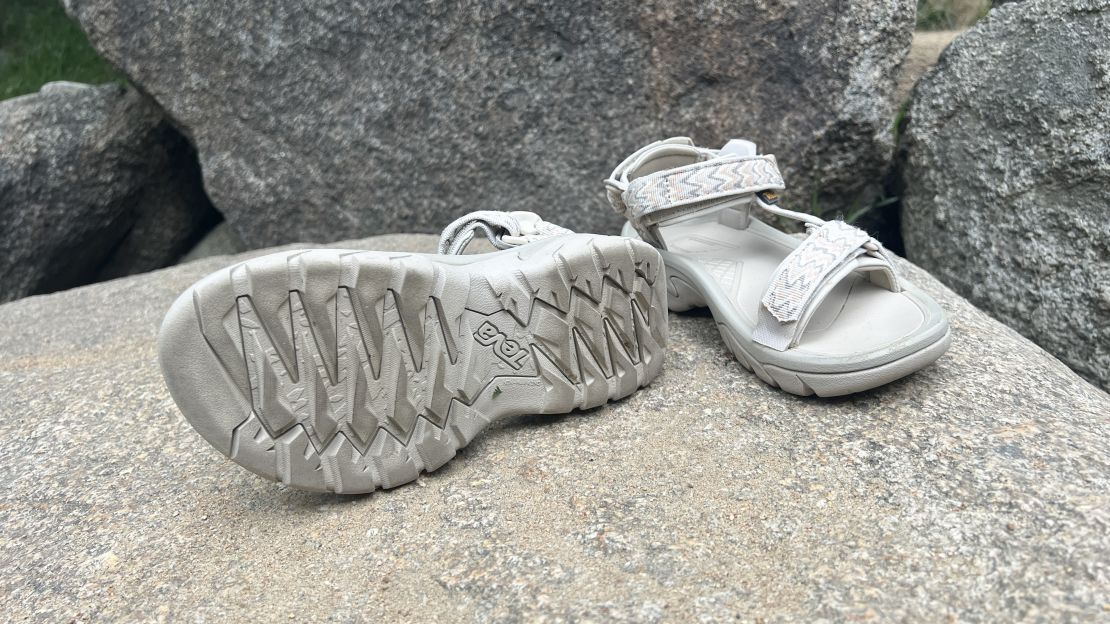
Unlike ultralight hiking boots and trail runners, which typically feature more fragile EVA foam midsoles, Teva’s Terra Fi 5 are manufactured with a durable, molded polyurethane midsole that’s designed to last for years and support a hiker’s foot for many miles on rocky, root-y trails. Plus, the shoe’s nylon shank, situated between its insole and midsole, provides extra structure, which helps if you take these on a backpacking trip with 40 pounds on your back.
As a national parks and hiking expert, sustainability is important to me, and it was music to my ears that this pair of Tevas features quick-dry recycled webbing and a 60% recycled mesh to help keep the wearer’s feet cool and dry on sweltering summer strolls. I took these sandals out on more than ten long dog walks on city concrete in 90-degree Fahrenheit weather and suffered zero blisters. My feet stayed dry and comfortable on even the hottest days.
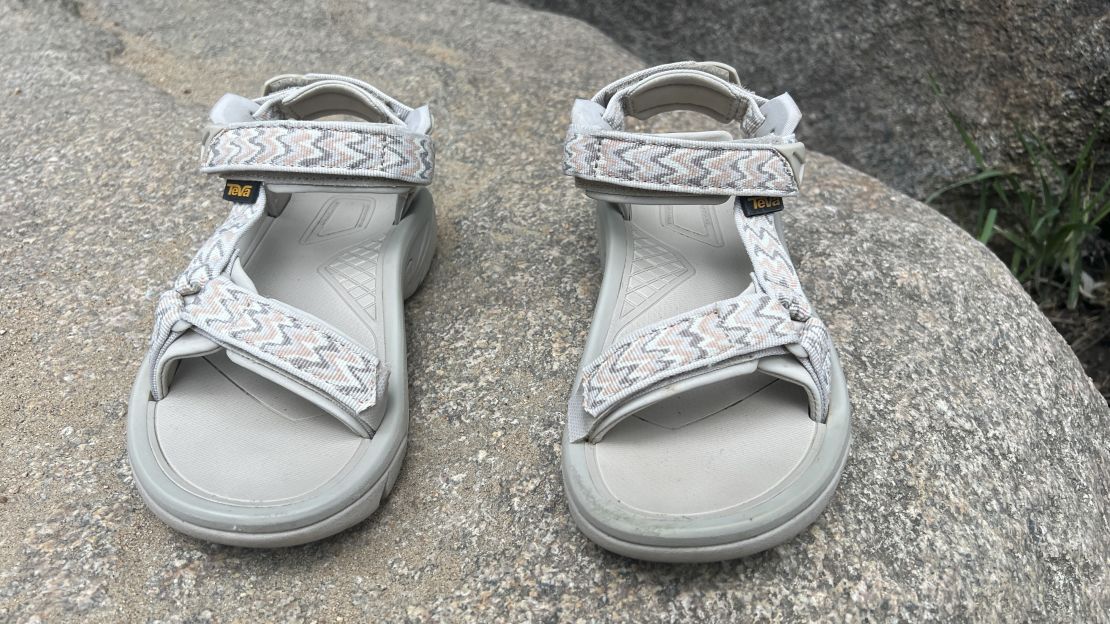
Are these the most lightweight or affordable sandals on our list? No. The Teva Terra Fi 5 Universal Hiking Sandals weigh 11 ounces per shoe for a women’s size 7. I found this to be perfectly adequate to clip to the back of my pack on a three-day trip into the Rocky Mountains as a second set of shoes, but if I were ultralight backpacking, I would certainly spring for the Xero Z-Trail EV ($80), which weigh just 4.3 ounces per shoe and scored highly in our adjustability and traction categories, but, understandably, lack the support of more robust hiking sandals.
If cost is the number-one decider for you when it comes to picking the right hiking sandals, grab the Teva Original Universal ($55), which come in a cornucopia of delightful colors, offer decent grip and are secure enough to use on shorter treks or as?camp and creek-crossing shoes.
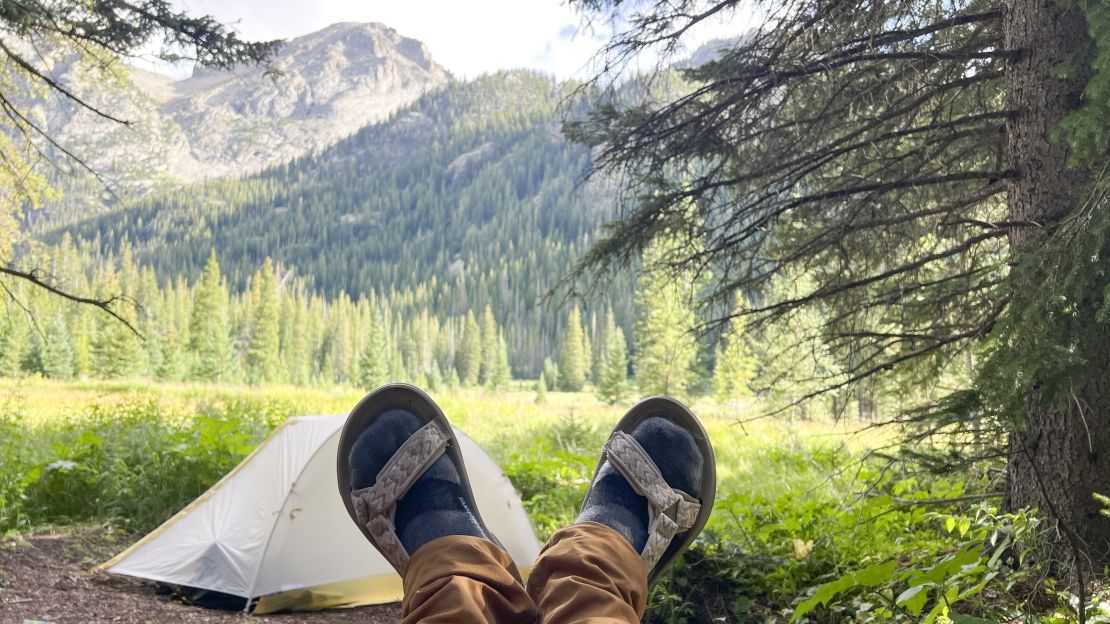
However, if you’re taking the full plunge into sandal hiking and want an ultra-supportive, comfortable and grippy pair of shoes that won’t let you down on rocky stream crossings and loose gravel trails, do yourself a favor and nab a pair of Teva’s Terra Fi 5 Universals. They are equally as at home on the sopping wet deck of a sailboat as they are traversing a desert ecosystem in southwestern Utah. Made with recycled materials and backed by the company’s one-year warranty, the Terra Fi 5 scored highly in every one of our categories and cost significantly less than many other shoes we tested. They’re the best hiking sandals out there.
How we tested
Our editors scoured the web, consulted with hiking experts and developed an extensive testing rubric to put every pair of hiking sandals on this list through a series of intensive tests. We made a selection of the 11 best hiking-specific sandals, based on the top-rated and bestselling products across a variety of major stores and websites. The sandals that made it into our final list were subjected to a rigorous series of on-the-trail, in-town, underwater and controlled in-home tests to determine which ones were the best overall. The three pairs of hiking sandals that scored the best were also taken out on long, wet hikes and backpacking trips in Colorado’s Rocky Mountains.
Performance
- Comfort: We tried on every pair of sandals and wore them for at least two miles on neighborhood sidewalks and hiking trails.
- Fit: We noted whether the sandals seemed shaped for wide, narrow or average feet. We also noted any arch support or lack thereof.
- Adjustability: We adjusted all the sandals, using the sandal’s straps or velcro to dial in the fit. Counting each adjustment point on every shoe, we noted how customizable the fit was for each pair of sandals.
- Traction: We walked for 100 feet on wet rocks in a creek in each pair of sandals and noted how the grip performed. We also walked on 100 feet of dry rocks and 100 feet of flat gravel trail to compare the grip across various surfaces. We took the sandals on a 1- or 2-mile dog walk on concrete sidewalks and compared the grip and support on this harder surface.
- Security: We noted the security of each sandal, based on strap design and the quality of each adjustment point. We took notes on if the sandals felt less secure in the water, as opposed to on land.
- Durability: We yanked on every sandal’s adjustment points and made notes of any fraying or tearing. After the hiking and walking tests, we noted which sandals still looked new and which seemed less durable.
- Drying time: We soaked each pair of hiking sandals underwater for 30 seconds. Afterward, we set the shoes out on a sunny Colorado balcony and checked in every 15 minutes to see how quickly each pair dried.
Performance
- Colors: We counted the number of colors that each pair of hiking sandals comes in.
- Aesthetics: We compared the sandals to other, more streetwear-focused sandals. We noted whether certain sandals seemed stylish enough to wear into town or to a restaurant.
- Warranty: We researched and wrote down the warranty length and terms for each pair of sandals and compared them. We also noted if the company provided a repair or resole program.
- Price: We compared prices for every pair of hiking sandals, noting what features were available across different price points.
Everything you need to know about hiking sandals
Like with most outdoor footwear, there are considerations to be made when purchasing a pair of hiking sandals, namely regarding weight, grip, support and adjustability. Personal preferences often reign supreme here, depending on what your priorities are. In general, you should ask yourself what the primary purpose of the sandals will be, if you’ll likely wear them in wet or dry climates and how specific or “dialed-in” a fit you want for your feet.
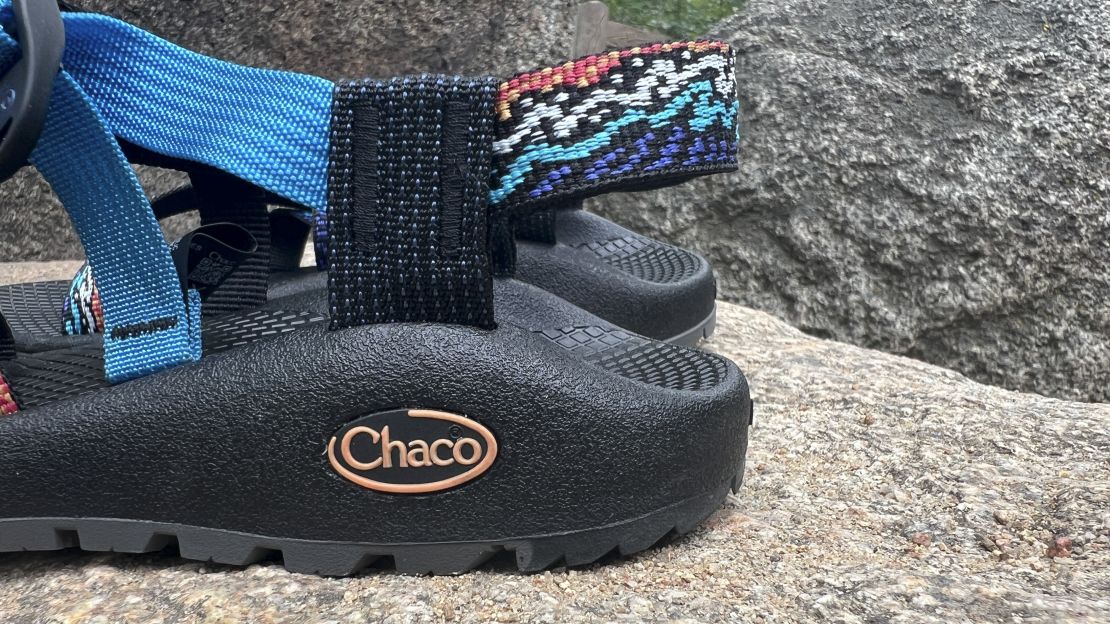
As we were building out the testing rubric and ordering products for this guide, we noted the wide variety of weights and materials that hiking sandals come in. Unsurprisingly, the most supportive shoes that boasted the grippiest, most aggressive soles also tended to weigh more because they had thicker polyurethane soles, nylon shanks and, in the case of the Chaco Z/Cloud 2, an extra layer of cushy polyurethane for comfort.
In the case of the lightest sandals on our list, like the Xero Z-Trail EV, the thin, textured sole is made with the brand’s proprietary rubber blend, topped with a lightweight foam, to help absorb impact. Planning to embark on a multi-day backpacking expedition in your thongs? Spring for an ultra-supportive pair that weighs more and offers the medial arch support you’ll need to make those big miles.
Traction is another factor that greatly impacts hiking sandals’ performance. All the shoes we tested utilized some sort of rubber compound for their outer soles to stay grippy in wet and dry conditions. If you know you’ll be tearing it up on gravelly or muddy trails where a high level of grip is imperative, look at the underside of the sandals you’re considering buying. Do their soles have a smoother bottom or aggressive, thick lugs that will grip tough, textured surfaces as you’re trekking? It may be worth spending more on your outdoor sandals if you know you’ll need superior Vibram traction for swift creek crossings or want super-thick lugs for deep mud and sand.
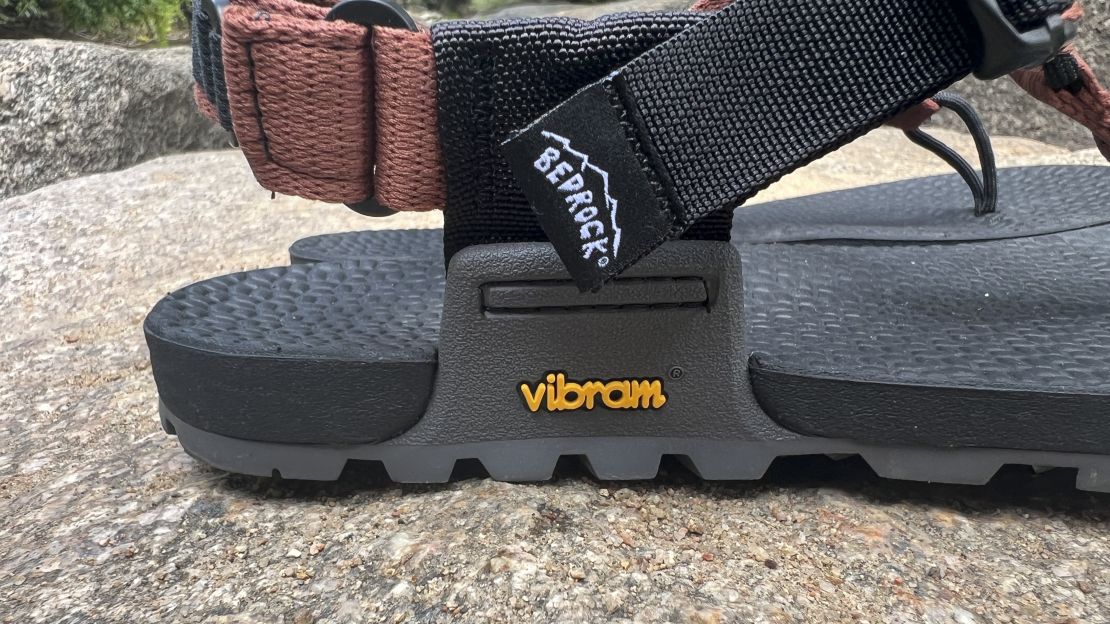
Lastly, hiking sandals come with a wide variety of adjustability points. Chaco, for example, utilizes a strand of webbing threaded through the sole, combined with a cinching buckle, so that you can perfectly adjust the shoes’ toe straps and heel tightness before tightening them over your arch. Using a different adjustment strategy, the Teva, Xero and Ecco shoes we tested featured numerous velcro straps that could be easily tightened and locked into place so that the hiking sandals were snug against the user’s foot and wouldn’t cause blisters.
Other hiking sandals we tested
Though grippy, this sandal lacked the arch support we craved on big hikes.
With minimal arch support and a strap design that featured a single toe loop and ankle cuff, the Bodhi Classic felt more like a glorified flip-flop than a rugged hiking sandal. That being said, they did sport some pretty great traction.
With great traction and fair pricing, this sandal was another top scorer in our tests, but couldn't quite beat out the winning Tevas.
For a mere $5 more than the Chaco Bodhi, the Chaco Z Cloud offer superior arch support, grippier soles and more secure webbing so you can dial in that perfect fit. That said, they weren’t quite as grippy or supportive as our top winner, which was similarly priced.
The Lowdown sport excellent, grippy soles but lack the adjustment points of more expensive Chacos.
The Chaco Lowdown feel like a bare-bones, budget version of other Chaco hiking sandals. As such, they boast fewer adjustment points and less support than their pricier siblings that we tested. They did, however, have a good grip on wet and dry rocks.
They're pricey, but our tester loved these sandals' Vibram soles and extra-tough lugs.
With traction-heavy Vibram soles and aggressive lugs, the Z/1 Rapid Pro from Chaco are the grippiest sandals we tested. They were also one of the most expensive, coming in at $130 per pair. If amazing grip is your number-one decider when purchasing a hiking sandal, these infinitely adjustable and colorful stunners from Chaco are worth considering.
Bedrock’s sandals boasted great grip, but their toe-thong style was less comfortable than our winner.
As someone with higher arches, our tester found it tough to walk in Bedrock’s flat, flip-flop-style sandals for more than a mile or two. Though the brand’s Evo 3D Pro boasts awesome grip, we worried about the potential for toe blisters, since the shoes’ main support runs between the big and second toes. However, this brand has, by far, the best warranty on this list.
This minimalist sandal felt too pricey for its bare-bones styling, according to our tester.
The Cairn Evo seemed pricey for minimalist, flip-flop-style hiking sandals with a thin heel strap. Our tester found them tough to adjust and worried about the lack of arch support on long treks. That being said, Bedrock boasts an amazing lifetime warranty, which could justify the higher price.
Xero’s extra-grippy Z-Trail EV is our top pick for ultralight hikers and backpackers.
We were impressed with Xero’s minimalist Z-Trail EV sandals, which weigh in at a scant 12 ounces for a men’s size 10. Though they didn’t score as highly as some of the more fully-featured sandals on this list, they had an amazing grip for such a thin and ultralight trail shoe. The downside? Minimal support. These hiking sandals would be best for the barefoot crowd or clipped onto a backpack for creek crossings.
On a budget? Teva’s Original Universal sandal won’t steer you wrong, offering decent traction and support.
If budget and affordability are your top priorities when it comes to selecting sturdy hiking sandals, grab a pair of Teva’s Original Universals. At just $55, the simple design is easy to adjust, fits wide feet well and has a good enough grip on dry and wet surfaces.
Our testing team loved the groovy colors and great grip of the Hurricane XLT2, but they weren't quite as grippy as our winners.
If you have the budget, skip the Teva Original and consider the Hurricane XLT2 Sandal. For $20 more, they will give you a much better grip, great arch support and loads of fun, unisex colorways. They’re not as grippy or supportive as our overall winner, but they’ll get the job done in style.
We love the Ecco Yucatan for desert and city walking, but they didn’t fare as well in wet conditions.
Right out of the box, the Ecco Yucatan Sandals were easily the most comfortable sandals we tried. They were so comfortable that our tester immediately took them on an 8-mile hike in the Rocky Mountains, which included getting wet on multiple creek crossings. Unfortunately, she came home with two blisters and noted that the Yucatan’s traction wasn’t as grippy on wet rocks as some of the other sandals on our list. We recommend the Ecco Yucatan for dry hikes and city walking, because of their cushy soles and good grip on dry paths.










